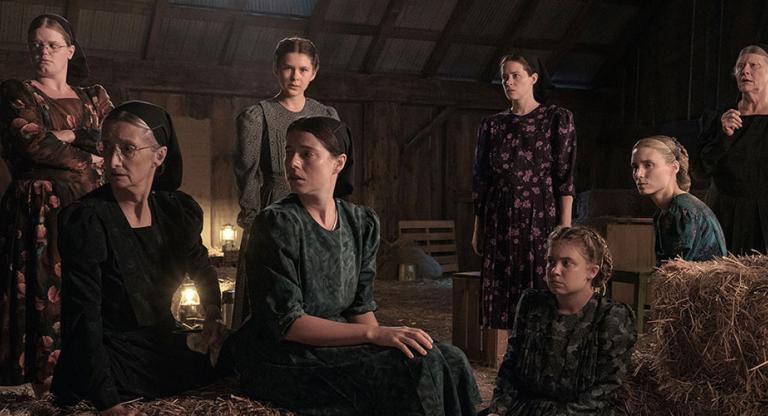Casa Susanna (2022) opens the way a classic melodrama usually ends, with an elderly woman returning in bittersweet gratitude to the secret place, now changed by time, where the real possibilities of her young life flourished and then faded. The woman is Katherine Cummings, an Australian octogenarian. And the pocket of promise is a bungalow colony in the Catskills, collapsed roofs half reclaimed by undergrowth, where Katherine, then known by a different name, came in the early 1960s to cross-dress, as she would have said at the time.
Sébastien Lifshitz’s documentary gathers together former denizens of the summer colony Casa Susanna and their younger relatives, old now too. The biological grandson of the property owner, who was a cisgender woman named Maria, recalls his step-grandfather, Maria’s husband, who was known in professional life as Tito and to Maria’s family as alternately Tito and Susanna. Maria and Susanna opened the property to visitors who could freely live as women there, such as Cummings and Diana Merry Shapiro, subsequently an influential early computer programmer, who appear here, and the science-fiction novelist Donald Wollheim, whose supportive wife, their daughter Betsy recalls, drove him up every summer.
I call Wollheim “him,” as do his daughter and his old friend Cummings, though the pronoun rather sticks in the throat, which is the crux of the film. Many of the women at Casa Susanna would have described themselves, at least circa the 1950s and ’60s, as male transvestites, à la some of the attendees of Provincetown’s Fantasia Fair in Rosa von Praunheim’s documentary Transsexual Menace (1996), or Ed Wood in Ed Wood (or, indeed, in life). This now appears a largely transitional identification, both personally and historically; taking seriously the standards of a different time and the way they shaped lives, the film shows plentiful male-presenting photos of both Cummings and Merry-Shapiro, though its thoughtful editing also shows how they changed as the world did, only revealing two women’s deadnames once it becomes clear, with a surprising finality, that deadnames is what they are.
Cross-dressers came to Casa Susanna—finding out about it through word of mouth and correspondence, much of it fostered by Virginia Prince’s influential magazine Transvestia—to dress up, to validate each other, and to talk through these questions of identity. Many of them did eventually surgically transition, as Cummings and Merry-Shapiro did, but some, like Wollheim, were conflicted about their identities, or lacked the vocabulary to articulate them. (Cummings: “A great many cross-dressers think, ‘Oh, once I get married it will all go away. I won’t need this imaginary woman that inhabits half my body and most of my mind.’”) Knowing what we know now—and what his daughter comes to appreciate over the course of the film—it seems equally cruel to call Wollheim by either the name “Donald” or (a heart-rending late reveal) “Doris,” given that he apparently never identified as a woman during his lifetime, and would likely have rejected the title, if only out of a tragic sense of self-loathing.
This, then, is a sentimental queer-elder film, made just in time—there are only four interviewees, one of whom, Cummings, has died since the film was shot—with rueful interviews spanning lives and struggles in and out of the closet. Relatedly, and most notably, it is also an archival resurfacing and reclamation of a previously invisible aspect of mid-century American life, thanks to the amazing trove of photos to which the filmmakers had access. There are allusions by some of the subjects to the effect that some of the women in the photos were prominent men in public life, but here, in these saturated Ektachrome snapshots, they are known only by their beehive wigs, their furls and heels, their shawls and head scarves, their cocktail dresses no doubt purchased under false pretenses from a high-end department store. They look as ironically glamorous as the women in a Sirk film, and why shouldn’t they? The archival images in Casa Susanna show an embrace of mainstream femininity, the norms of the society that made it a risk to even pose for them, and it is astonishing and beautiful that they survived.
Casa Susanna screens this week at the Toronto International Film Festival.





